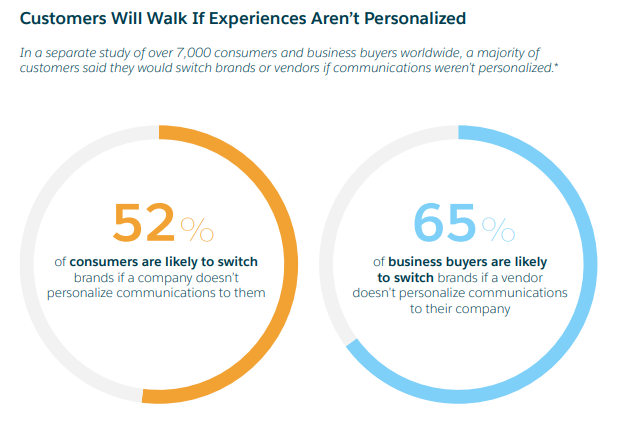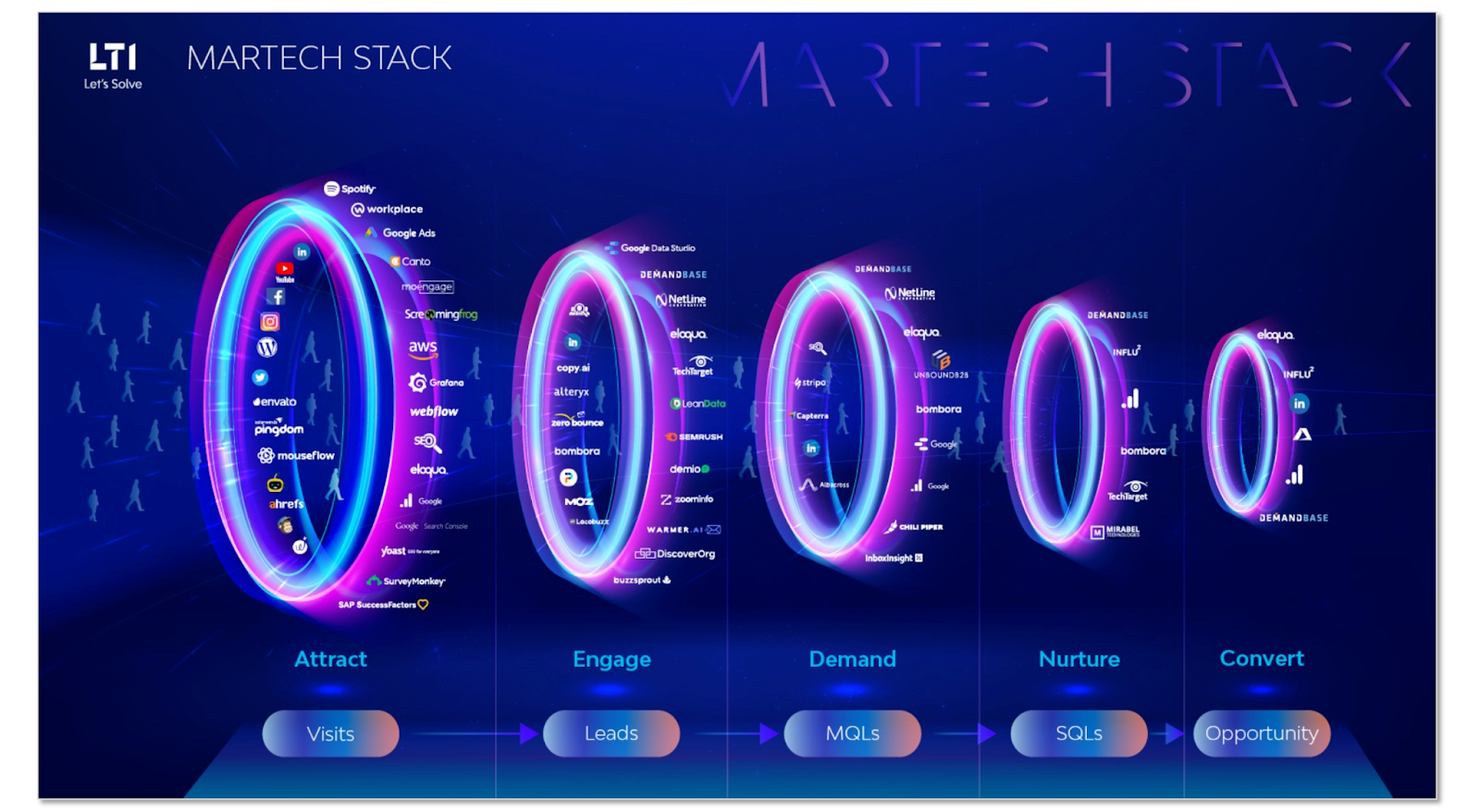What is Marketing Automation, and How Can You Make It Work for Your Business?
As consumer behaviors continue to grow more complex, spreading interactions across multiple touchpoints and prompting so many repetitive processes, the need for marketing automation has become more glaring.
Automation has established itself as a crucial part of the marketing industry, helping businesses of all sizes get better results with relatively less effort.
- A report by Business 2 Community revealed that organizations that leverage marketing automation for nurturing leads experience up to a 451% increase in qualified leads.
- A different study by Nucleus Research revealed that for every $1 invested in B2B marketing automation, companies report an average return of $6.66 (over 600% ROI).
This goes to show how useful automation has become in modern marketing. This guide will give you the basics of marketing automation and explain how you can leverage it to build a more productive revenue team.
What is Marketing Automation?
Marketing automation is the use of software systems for handling repetitive marketing tasks and completing workflows with minimal human involvement.
All organizations have an overarching objective: increase revenue and lower running costs. But to achieve this, maintaining a solid alignment between people, processes, and technologies is crucial. Marketing automation makes this attainable by helping companies to streamline, automate, and track marketing activities.
Due to rising complexities in consumer journeys, marketers are managing more channels, creating more personalized content, and generating more data than ever. They have become burdened with too many repetitive tasks, from emails and social media posts to behavioral tracking and user onboarding.
At its core, a marketing automation workflow is designed to streamline and simplify complex and time-consuming roles in modern marketing and sales departments. With marketing automation, you do not have to push a button every time you want to send an email, publish a social media post, or track your leads.
Unlock your 10x ROAS potential with our Marketing Data Centralization Guide
How Can Marketing Automation Benefit Your Company?
The world of marketing is a fast-paced one. With technology on our side, a good chunk of the hard work can be automated, allowing marketers to focus more on being creative and producing better results.
But this is just the tip of the iceberg. Automated marketing can benefit your company in so many ways.
Eliminate Repetitive Tasks
This is arguably the most obvious benefit associated with automation, not only in marketing but also in all areas of its application. When marketers are always doing the same set of things, it can eventually get boring and lead to them burning out.
Harvard Business Review calls monotonous tasks and a lack of meaning when working in a fast-paced environment a recipe for burnout. However, with the implementation of marketing automation, these repetitive tasks become minimal. You can set up a system once and let it run almost independently.
Some of the things you can automate include email campaigns, lead scoring, performance tracking, social media posts, and more. By automating these processes, you have more time to focus on other areas, significantly boosting performance.
Generate More Qualified Leads
Marketing automation is instrumental in helping marketers generate more qualified leads for their organizations.
According to a study by VB Insights, 80% of companies that use marketing automation generate more leads, and 77% notice an increase in conversion rates.
How does marketing automation help you generate more qualified leads?
The answer lies in personalized consumer experiences.
Marketing automation platforms are designed to work with unique data. Thus, they automatically track each prospect at every point in their journey, allowing you to serve content tailored to their individual needs.
This is particularly evident in email marketing, where prospects get triggered email sequences based on their behaviors throughout the funnel. A study by Epsilon showed that automated (triggered) emails have 67.9% higher open rates and 241.3% higher click-through rates than regular email blasts because they’re crafted using personalized content, making prospects understand that their unique needs are being addressed.
Another study by Salesforce showed that 65% of business buyers might switch brands if their vendor doesn’t deliver a personalized experience.
More Efficient Use of Data
Connecting with customers across several channels and an ever-increasing number of touchpoints is a data-intensive exercise. The average enterprise-grade marketing team relies on 91 marketing cloud services, and making sense of the data this software structure generates can be daunting sometimes.
You need to categorize your data by source, apply segmentation, identify which sources bring in the best results, track user engagement, build consumer profiles, and so on.
This can be time-consuming and prone to human error. However, with automation, all these processes can be completed in seconds and at scale. That way, it becomes easier to make better data-driven decisions and move your company closer to its objectives.
Faster Revenue Growth
Marketing teams have different objectives: getting new qualified leads, increasing retention, boosting brand engagement, etc. But it all ties into one overarching goal: helping the organization generate higher revenue.
Marketing automation has proven to be instrumental in helping businesses shorten sales cycles and increase conversions, consequently speeding up revenue growth.
The benchmark analysis reports that organizations implementing marketing automation grow their pipeline by 45% and boost revenue by 25%. Interestingly, 76% of these companies achieve these results within their first year.
How to Introduce Marketing Automation to Your Team
A survey from Salesforce Research showed that 67% of marketers currently use at least one marketing automation platform.
If you’re yet to fully dive into marketing automation, you’re leaving a lot on the table.
That said, deciding to adopt automated marketing is only one step of the journey. You need to carry your entire team along, arming them with the right information and helping them see the need to walk the new path.
This section discusses some proven steps that can help you get your team on board with implementing a marketing automation strategy.
Identify Marketing Workflow Process Bottlenecks
Before you introduce automation to your team, you need to recognize what areas truly need automating. The best way to do this is to analyze your process map and identify bottlenecks that diminish operational efficiency and prevent you from reaching your goals. Go through your list of bottlenecks to explore whether marketing automation can be a shortcut to reaching your desired outcomes. Identifying these areas will help you determine the nature of the tools you would need to provision.
Introduce Changes Gradually
While you might be excited to hit the ground running with marketing automation, you also do not want your team members to experience a sort of culture shock. It is better to gradually introduce these changes, allowing them to slowly adjust to the new system and overcome the marketing automation learning curve.
Gradual integration of marketing automation also makes it easier to measure the success of your automation strategy at every level. This process gives you the opportunity to get timely feedback on how each implementation has impacted your overall marketing efforts, empowering you to make well-informed decisions.
Invest in Team Onboarding
27% of organizations still see themselves as “new” to marketing automation. This is understandable because marketing automation is a broad concept, and every company has a unique automation strategy.
The best way to get the maximum results from marketing automation is to ensure the whole team understands the ins and outs of the system with respect to your company’s objectives. This can only be achieved when you invest in team onboarding.
Test in a Low-stakes Environment
Since automation is entirely new for your organization, you do not want to jump in with both feet. You need to test your automation strategy in a low-stakes environment before spreading it throughout the organization.
This doesn’t mean that marketing automation is a high-risk process. It actually means that you need to be sure that your desired marketing automation workflow is compatible with the structures and processes you already have in place. If it doesn’t work out as planned, you will only need to make minimal changes because it won’t have a serious impact on your established systems.
Analyze Automation Success and Alternate if Needed
Implementing marketing automation does not mark the end of the journey. It is crucial to constantly monitor whether your automation strategy is resolving the bottlenecks in the marketing processes.
You can measure the success of your strategy by considering the number of tasks completed—for example, the number of emails sent, social media posts made, size of the audience segments generated, the number of users onboarded, etc.
You can also consider the results generated from these automated tasks. What was the open rate for your emails? How much engagement did your blog and social media posts generate? While analyzing these, be sure you know the benchmarks for each metric with respect to your industry.
If you notice that a particular area is yielding results that fall below the bar, you can make appropriate changes and take another shot until the entire system is fully optimized.
Components of Marketing Automation
A marketing automation system comprises a variety of components, and the tools included in each category depend on the nature of your company and how you structure your marketing activities.
Our next blog will reveal some of the most essential enterprise marketing automation tools you can leverage for a more productive marketing workflow.
In general, the three components below form the basis of marketing automation. Every activity that occurs, as well as the tools used throughout an automated marketing process, is directly or indirectly connected to these components.
A Central Marketing Database
A database is one of the most critical components of marketing automation. This is where all your marketing data is stored and managed. The database makes list building and segmentation possible, as well as the development of audience profiles, lead scoring, and everything that’s required for identifying qualified leads and optimizing the entire marketing campaign.
Traffic and Engagement Engine
This encompasses all the tools you use for driving traffic into your marketing funnel and engaging prospects throughout their journey.
It includes automated email systems, blogging and social media automation tools, landing pages, and more.
Blogging and social media automation tools allow you to schedule a series of content for automatic posting, helping you connect with your audience at the right time.
Automated email systems allow you to set up triggers that release personalized messages to leads, offering them unique solutions while building relationships.
Your landing pages help you engage your prospects at each stage within the funnel while collecting valuable data for your marketing team.
Analytics Engine
An analytics engine is responsible for helping you measure and optimize the performance of your marketing campaigns.
These systems automatically pull data from your marketing databases, generating reports and offering insights into the overall marketing performance.
Bottom Line
The presence of technology in the world of marketing has made it possible for most marketing activities to be automated. This has resulted in a significant reduction of time-consuming, repetitive tasks and an improvement in the overall productivity of marketing teams. However, the success of your marketing automation strategy largely depends on the nature of the tools you have in your marketing stack.
To help you stay on track, we’ve rounded up some of the best enterprise marketing automation tools to help you cut down on time-wasting activities, ramp up productivity, and improve your marketing revenue.
500+ data sources under one roof to drive business growth. 👇
.png)
 (1).png)
.png)

.png)








 (1).png)

.png)





.png)


.png)
.png)
